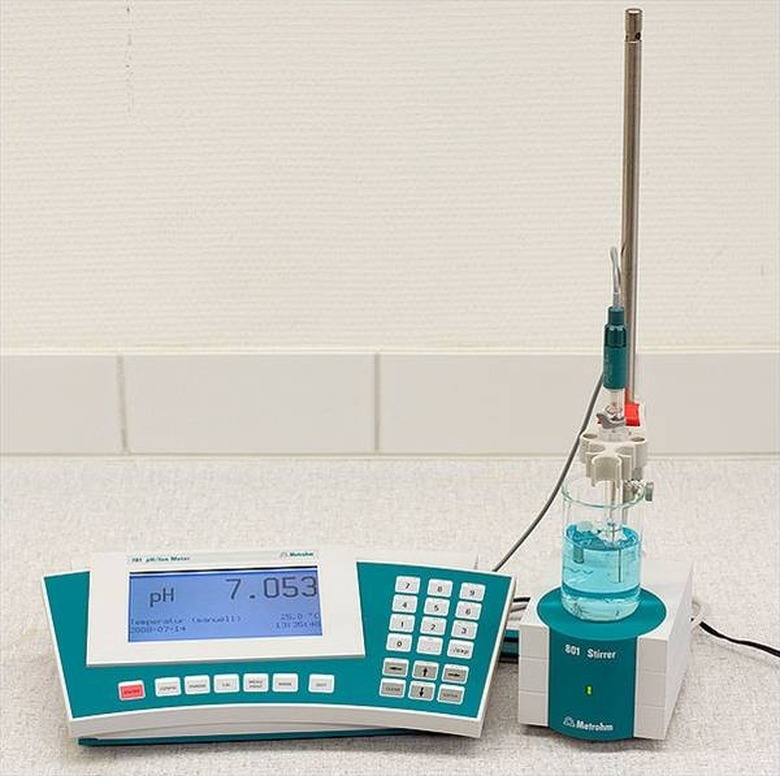How To Clean A PH Meter
A pH meter is an electronic device measures pH, which is the acidity (acids) and alkalinity (bases), of substances. pH meters loose some of their accuracy with every use and need to be calibrated on a regular basis. Along with regular calibrating, the pH meter electrode needs to be cleaned between each use to prevent contamination of the substances being measured. pH meters are usually use glass probes that are submerged into the substances being measured. The probe uses ions to attract other ions in the substances. It needs to be cleaned after every use. At all times, the glass tip of the probe is stored in a tube filled with an acidic solution around pH 3. The probe must never be stored in distilled or deionized water for long because the water will remove ions from the probe through diffusion, which can degrade the probe and its measurements.
Step 1
Gather the equipment. Most of the items are available at chemical supply stores. Procure Kimwipes, which are a special tissue specifically made for cleaning pH meters. If you cannot find Kimwipes, try to find a similar product. Distilled or deionized water will work as a general cleaner. A generally used pH-electrode cleaning solution is 0.1M of hydrochloric acid (HCl) with a pH of 1, which is used to clean the probe more thoroughly approximately once a month.
Step 2
Prepare the pH meter for measuring. Put rubber gloves on. Pour the substance being measured into one beaker. Pour distilled or deionized water into a second glass beaker. Pour the pH-electrode cleaning solution into a third beaker. Be sure that there is enough water and cleaning solution in each beaker to thoroughly cover and clean the glass probe.
Step 3
Measure the substance's pH level. Take the pH meter electrode probe out of it storage solution, rinse it with distilled or deionized water and wipe it clean with a Kimwipe. Proceed to take the measurement of the substance's pH level.
Step 4
Clean to pH meter's probe. Immediately after measuring the pH level of the substance, soak the probe in the beaker of pH-electrode cleaning solution for the approximately 30 minutes or more, depending on how thoroughly it needs to be cleaned. After that, rinse the probe with distilled or deionized water and blot the probe with a clean Kimwipe to absorb any remaining water. Insert the probe back into its storage container filled with a solution with a pH of 3.
Things Needed
- Rubber gloves
- Electronic pH meter
- pH-electrode cleaning solution
- Distilled or deionized water
- Several glass beakers
- Kimwipes
TL;DR (Too Long; Didn't Read)
pH combination electrodes, which are used in commercial pH meters, require a bit more work. They need to be cleaned with more aggressive cleaners refilled internally with a reference solution and then soaked in a filler solution.
Warning
Be careful of getting any of the involved substances in the eyes or on the skin.
Cite This Article
MLA
Gugie, John. "How To Clean A PH Meter" sciencing.com, https://www.sciencing.com/clean-ph-meter-4812473/. 24 April 2017.
APA
Gugie, John. (2017, April 24). How To Clean A PH Meter. sciencing.com. Retrieved from https://www.sciencing.com/clean-ph-meter-4812473/
Chicago
Gugie, John. How To Clean A PH Meter last modified March 24, 2022. https://www.sciencing.com/clean-ph-meter-4812473/
